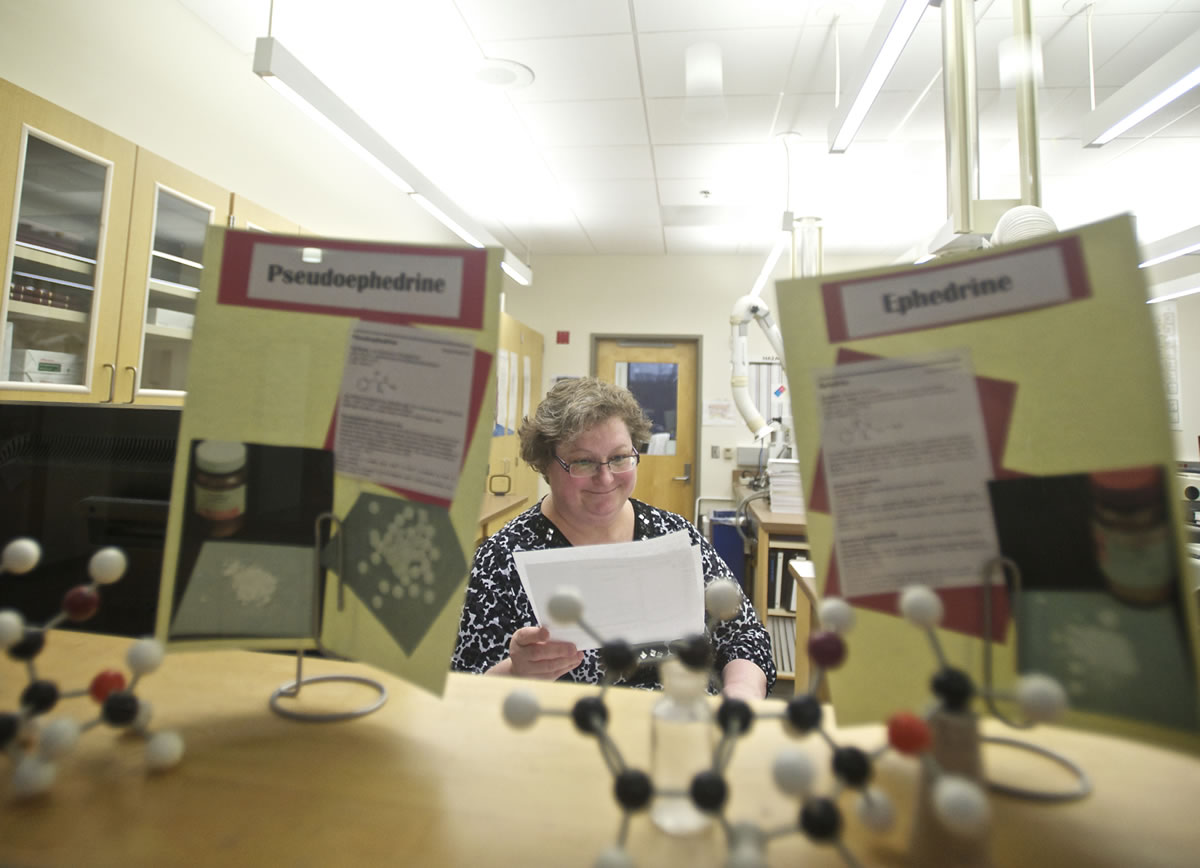A year after the legalization of recreational marijuana, law enforcement and the court system have seen some, but not all, of the effects from the new law.
Recreational use of 1 ounce or less of the drug is legal for those 21 and older, but higher amounts remain against the law, unless it’s medical marijuana. Under new testing requirements in Initiative 502, the time and cost to test illegal amounts of marijuana have skyrocketed. Meanwhile, misdemeanor marijuana possession charges have plummeted. What remains unknown is how the law will impact driving-under-the-influence rates.
Identification requirements
Initiative 502 for the first time required law enforcement to test for the percentage of THC in order to prove illegal possession of marijuana, which could include a minor in possession or an amount more than an ounce. Only green leafy substances with 0.3 percent THC are legally considered marijuana.
o Legal: 1 ounce (28.35 grams) or less for those 21 and older.
o Misdemeanor: More than 1 ounce, up to 1.4 ounces (40 grams).
o Felony: More than 1.4 ounces (40 grams).
“Imagine you have a banana. It looks like a banana and smells like a banana, but someone tells you that you can’t call it a banana unless it’s 5.5 percent yellow,” said Ingrid Dearmore, manager of Washington State Patrol’s crime lab in Vancouver.
As a result, State Patrol had to change its method for testing marijuana, a measure that costs nearly three times more and takes 16 times longer than the former method, Dearmore said.
Previously, State Patrol had evidence custodians who were trained as marijuana leaf technicians that tested marijuana with a simple microscope and chemical test. The process took about 15 minutes and cost about $100, Dearmore said.
“All they cared about was whether it was there or not; they didn’t need a percentage,” said State Patrol Sgt. Jason Hicks, a drug recognition expert. “Now, we need a document in court that certifies the percentage of THC, and it falls back on the crime lab and our scientists.”
The influx of marijuana cases, once handled outside, has bogged down the crime laboratories in Vancouver and Spokane. Each laboratory has only two scientists who test marijuana, Dearmore said.
“It’s very busy,” Hicks said. “It’s going to have an impact on how long it takes to finish our investigation and hand it over to prosecutors.”
The new test, which identifies a percentage of THC, takes about four hours and costs nearly $300, Dearmore said. Marijuana is processed through a machine called a gas chromatography flame ionization detector and compared with a reference sample with a known level of THC, said Sharon Herbelin, a scientist in the Vancouver laboratory. There is a calibration curve to determine a percentage, she said.
Possession charges
Misdemeanor marijuana possession charges have plummeted by 78.6 percent in Clark County since state voters approved I-502 legalizing recreational marijuana.
Approved in November 2012, the law allows anyone 21 or older to have 1 ounce or less of marijuana without penalty. Meanwhile, rules for possession of more than 1 ounce were unchanged, leaving law enforcement with the task of distinguishing between legal and illegal use of the drug.
In Clark County, misdemeanor marijuana possession charges decreased from about 3,700 in 2012 to nearly 800 in 2013. The latter charges involved possession of between 1 and 1.4 ounces (40 grams) of marijuana, which remains a misdemeanor. Possession of more than 1.4 ounces is still a felony.
As expected, felony marijuana possession charges have kept pace with the pre-legalization period, said Clark County Senior Deputy Prosecutor Jeff McCarty.
Even with a reduction of 2,930 in misdemeanor marijuana possession charges, legalization hasn’t noticeably reduced overall workloads in District Court, where misdemeanor cases are handled, employees said. Indeed, court statistics show that the overall number of nondriving misdemeanor cases, which includes marijuana possession, in District Court was about the same in 2012 and 2013, indicating that prosecution of other violations may have filled the void left by recreational marijuana.
Marijuana and DUI
Despite legalization of recreational marijuana, Clark County District Court statistics show misdemeanor DUI cases have gone down from 1,387 in 2012 to 977 between January and November 2013. (DUIs don’t become felonies until the fifth offense.)
“The law is still relatively new,” Hicks said. “It’s been legal for over a year and (marijuana) hasn’t been sold commercially. So far, we haven’t seen drug DUIs flood our roadways.”
It’s unclear how many of last year’s DUI cases were related to driving under the influence of marijuana, as the court system doesn’t track marijuana DUI cases separately from driving under the influence of alcohol and other substances.
There are dual reasons for that. Crimes are tracked in the court system according to their specific revised code. Although legal limits are set for both alcohol and marijuana, the state’s DUI law doesn’t distinguish between driving under the influence of alcohol and any other substance. The legal limit for marijuana is 5 nanograms per milliliter of THC, but police say drivers with lesser amounts of THC may still be arrested if they appear to be impaired. How much THC causes impairment can vary from person to person.
State Patrol specifically tracks how many of its DUI cases are related to drugs as opposed to alcohol, but marijuana DUIs are lumped together with other drug DUIs. In State Patrol’s Southwest Washington district, which includes Clark, Cowlitz, Skamania, Klickitat and Lewis counties, drug DUIs decreased from 120 in 2012 to 82 in 2013, said Hicks, who is a drug recognition expert.
“You might think that number would have spiked in the year marijuana was legalized, but it isn’t sold recreationally yet, so it’s too soon to tell if there will be an increase,” Hicks said.
State-licensed shops are scheduled to open no earlier than springtime, so currently, there’s no legal way to purchase recreational marijuana in the state.
“If there’s an impact, we won’t see it for awhile,” Hicks said.



